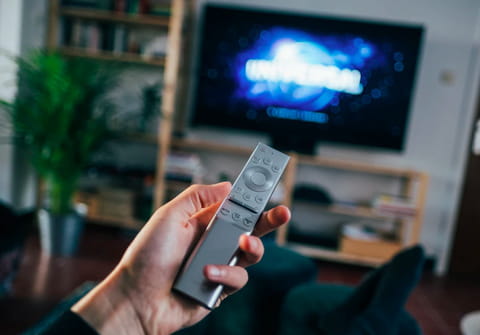The best TVs of 2022: Sony, Samsung, LG

Television technology is constantly advancing with countless new concepts emerging every year. If you are thinking of buying a new TV set but not sure where to start, this article will help you as we provide a simplified guide of the most important characteristics that should be taken into account when making your choice.
What's better: OLED or LCD?
Although there are more than just 2 types of display technologies, as a consumer, you must make the basic choice between OLED and LED, hence why we have this comparison for you.
LCD is the most cost effective option and the best suited if your TV will be placed in a well lit area with reflections from windows or other light sources. Contrasts aren't as visible as with some other technologies but these TVs have richer colours.
OLED is currently the most recommended format for watching movies or playing games as TVs with this technology boast better screen quality. It's also the option that offers better visibility from any angle or position, however it is the most expensive technology and there are several internal categories within it.
4K or 8K?
The advent of 4K has already revolutionised the quality of television images. If you buy a TV with 4K you won't regret it. Streaming platforms such as Netflix and Amazon Prime offer a multitude of content in 4K Quality.
8K is a step further but it's still a fledgling technology in its early stages. Whilst an 8K-TV does already exist, there’s little content available in this resolution at the moment and with that not set to change any time soon, it’s not something we recommend investing a lot of money in just yet.
HDR
Recently, HDR (High Dynamic Range) technology was introduced, which offers high quality images with a wider range of brightness. This technology allows you to see sharper and deeper images with higher contrasts and brightness levels. Several options are available: HDR10, HDR10+ and Dolby Vision. Even with the most basic HDR TV, you can be sure that the image will be spectacular even for video games. Some manufacturers offer HDR10+ and Dolby Vision at the same time, a fantastic experience if your budget can stretch that far.
Bits
Conventional SDR (Standard Dynamic Range) uses a colour depth of 8 bits. With 8-bit you'll get spectacular colour quality, but if you're considering a TV with HDR, it's important that you also include a 10-bit resolution panel to make the most of this technology.
HDMI-Ports
Although most TVs come with numerous remote connection options, it's very important that you have at least some connection ports when considering a new TV. Your new model should have at least four HDMI-ports like HDMI 2.1 and of course USB ports are always extremely useful.
DVB-T2
DVB-T2 will be the new standard with which digital television signals are transmitted when 5G technology is installed. So if you can get ahead of the changeover and make sure your new TV comes with this tuner you will save yourself from having to buy an adapter later.
Screen Size
This decision is more of a practical choice than a technical one and depends entirely on your taste and budget. However to get the most out of the screen you choose, it is important to consider the distance you want to watch TV from. If you buy a very large screen to sit directly in front of it, you will lose the viewing angle and a small screen at a great distance will make it difficult to see finer details. Try to find a balance.
As a general rule, the greater the distance between the screen and your viewing position, the larger the screen should be. On a 30-inch TV for example, the ideal viewing distance is between 1.5 - 2 metres, on a 50-inch screen, between 2 and 3.5 metres and on a 65-inch TV you should sit between 2.5 and 5 metres away.
Recommended Models
Here we’ll give you our list of televisions we recommend for your selection available on the current market:
- Sony OLED A80K: Uses a new generation OLED Evo panel providing higher brightness compared to A80J model from 2021. It meets almost all the criteria to be an exceptional TV including HDR10 and Dolby Vision support.
- LG OLED C2: There are six screen size options, including the world's first 42-inch model ideal for console and PC gaming. Spectacular picture quality and colour, HDR10 support, HDMI 2.1 and USB compatible.
-LG OLED G2: G2 series has been enriched with a new model with a diagonal of 83 inches and with a diagonal of 97 inches - the first in the world! Also available in 55-, 65- and 77-inch versions.
- Sony A95K: Is this year's flagship 4K model from Sony and one of the world's first QD-OLED TVs developed by Samsung. This advanced technology uses a blue OLED along with quantum dot converters for red and green and brings us closer to being able to watch content in the most advanced Rec.2020 video broadcasting standard.
- Samsung QN900B: One of the few 8K TVs currently available. Its screen is made up of much smaller LEDs than conventional LEDs, providing stunning picture quality. Equipped with 4 full-range HDMIs, this TV is great for video games as it reduces lag and frame tearing thanks to VRR technology. Available in 65in, 75in and 85in models.
- LG QNED99: Also based on Mini LED technology, this TV stands out at a fairly attractive price compared to other 8K TV sets. It supports HDR10 and Dolby Vision and is equipped with 4 HDMI and 3 USB ports. Unfortunately does not support VRR.


